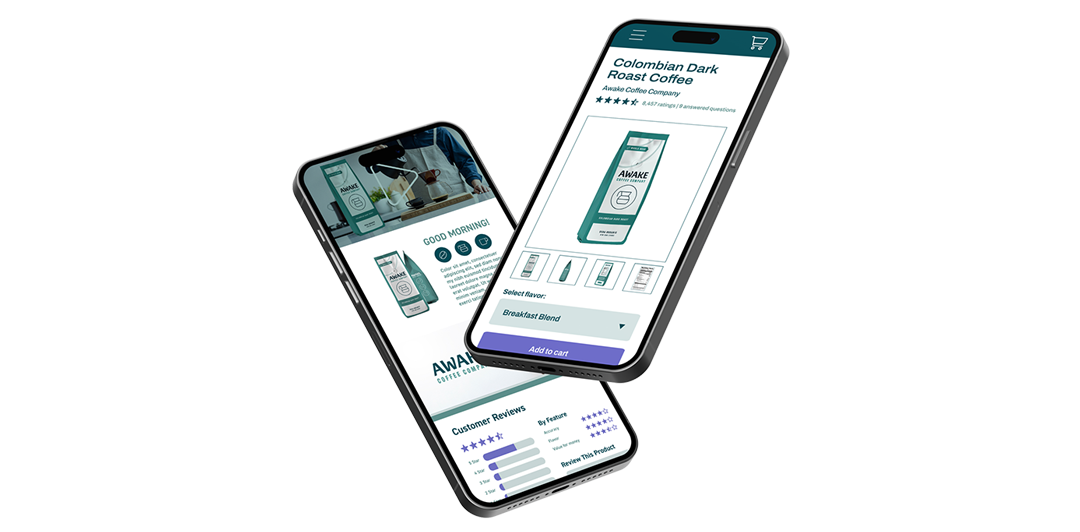Effective marketing is the cornerstone of any organization’s success, including healthcare practices and companies. Understanding trends in healthcare marketing empowers you to anticipate needs and position your organization to attract, engage, and serve more patients than ever.
The team at 1WorldSync has compiled the top healthcare marketing trends for 2023. Read on to learn how you can capitalize on these trends starting today.
1. Personalization in Healthcare Marketing
People enjoy –– and have come to expect –– personalized online experiences. The demand for personalization has now penetrated healthcare services and marketing.
Healthcare organizations must tailor marketing efforts to each patient, providing personalized recommendations that speak to the individual while maintaining HIPAA compliance. This can include customized treatment plans and personalized recommendations based on patient demographic information and needs and interests discovered through digital tools.
For healthcare organizations to deliver frictionless, enjoyable, and effective experiences, they must prioritize personalization. Knowing users, segmenting your patient audiences, and providing relevant recommendations and guidance are foundational to a superior personalized experience.
2. Creating Patient Communities
Forums, Google searches, WebMD: your patients scour online resources to better understand their conditions and find solace and community with others going through similar experiences.
Those you serve want community with others who understand, and they will seek out that community. Creating online patient communities through your site empowers you to bring patients together and provide the understanding community they seek while bolstering your marketing efforts.
Patient communities offer support, education, advocacy, and empowerment. And when your organization is behind the community, you coordinate and create more touchpoints with current and potential patients, supporting your marketing strategies.
3. Prioritizing Video Content
While basic content is foundational for your online presence, prioritizing video content is crucial for successful healthcare marketing in 2023.
Videos allow healthcare organizations to create a more personal, intimate touchpoint with patients or users browsing their site or socials. Video content provides a dynamic avenue for patient engagement that goes beyond simple text on a screen.
When considering video content for marketing purposes, you have several options:
- Educational Video
Educational video content can provide an in-depth discussion of topics pertinent to patients. You can publish basic information about general health and lifestyle, but you can also go more in-depth and discuss your practice’s areas of focus and specialization.
- Patient Testimonials
Video testimonials give an honest view of the experience potential patients can expect when they come to you for care. Few things are more compelling than a patient’s own words about their positive experience with a healthcare provider.
- Promotional Video
Finally, promotional videos allow you to highlight the unique features and services you provide. From showcasing providers and staff to giving a virtual tour, promotional video familiarizes patients with your practice.
Video content engages, informs, builds trust, and gives potential patients the confidence to schedule appointments. Plus, you can share video content on multiple platforms, including in targeted emails. It’s a multi-use healthcare marketing tool that helps you engage and book more patients.
4. Promoting Telehealth Options
Telehealth options became mainstream during the pandemic and have remained a viable approach to receiving care. Your healthcare marketing strategy must include promoting telehealth options for patients who want care without physically coming in every time.
Telehealth provides many benefits to healthcare organizations and the patients they serve. Virtual appointments can increase access to care, reduce overhead costs, and improve patient outcomes. When patients know they can speak to a provider from the comfort and convenience of their home, they’re more likely to choose that healthcare organization over another. They’re also more likely to seek care when they have a health concern, enabling providers to address issues early and prevent further injury or disease progression.
Patients expect access to telehealth care, and having that option drives their decision to choose their provider. Promoting your telehealth options gives patients another reason to choose your practice over another.
5. Capitalizing on Social Proof
Ratings and reviews are perhaps the most influential factor in new patient acquisition. When managed effectively, patient reviews can significantly impact healthcare marketing, helping you earn the trust of new patients.
Good reviews are essential to building a healthcare practice or organization. According to recent research, 90 percent of patients use online reviews to evaluate physicians, and 80 percent of consumers trust online reviews as much as personal recommendations. Seventy-seven percent of users look to online reviews as their first step to finding a new doctor.
Encourage your patients to leave a review of their experience. Sending a link via text or email simplifies the review process and increases the likelihood they’ll leave a review.
But ratings and review management don’t end when your patient hits “publish” on their review. Your marketing team should respond to each review –– both positive and negative. Addressing negative reviews allows you to remedy the issue while asking for a positive review, ultimately boosting your online reputation and marketing efforts.
Reviews and ratings significantly influence how existing and potential patients perceive your organization. The social proof provided by reviews proves to be a powerful marketing asset, especially when those reviews are monitored effectively.
6. Patient Engagement and Retention
Traditional healthcare marketing focused on new patient acquisition. Today we see a trend in healthcare organizations catering not only to potential patients but also to existing patients.
Marketing focused on patient engagement provides the tools, information, and resources your patients want and need to make confident, informed decisions regarding their care. Offer tools that promote an exceptional patient experience at every juncture of their healthcare journey. After all, the patients most likely to make an appointment with you are those already under your care.
7. Multichannel Marketing for All Stages of the Patient Journey
Healthcare marketing in 2023 extends beyond traditional channels. Patients are omnichannel shoppers –– including for their healthcare needs. And they expect consistency wherever they interact with your organization.
Your marketing efforts should extend to all channels where your organization presents itself. And it should engage with patients at all stages of their journeys.
Healthcare marketing should address potential patients, brand-new patients, those currently receiving care, and patients not under continuous treatment. Content designed for all patients at every touchpoint ensures you’re getting the most out of your marketing efforts.
Consistent marketing across channels builds the trust, authority, and legitimacy you need to increase the efficacy of your marketing strategies and campaigns.
8. Automated Solutions
Convenience and efficiency are primary drivers of patient satisfaction. Including the following automated patient solutions in your marketing strategies sets you apart from the competition while delivering exceptional patient experiences:
- Online appointment scheduling
- Text message notifications
- In-app messaging
- Patient portals
- Live chat
- Recalls systems
- Reminder series
All the above make healthcare more accessible and reduce friction in the intake and scheduling process. Implement these automated solutions and include them in your marketing. Patients want simplicity, and convenience tools like those listed above serve your patients by making their experiences easier and less stressful.
Healthcare Marketing Designed for 2023
Marketing is no longer negotiable for healthcare organizations. To succeed in today’s healthcare landscape, you must understand current marketing trends and implement them into your strategy. Effective healthcare marketing helps you reach, serve, and retain more patients than ever. Take advantage of these healthcare marketing trends for 2023 to grow your organization starting today.





